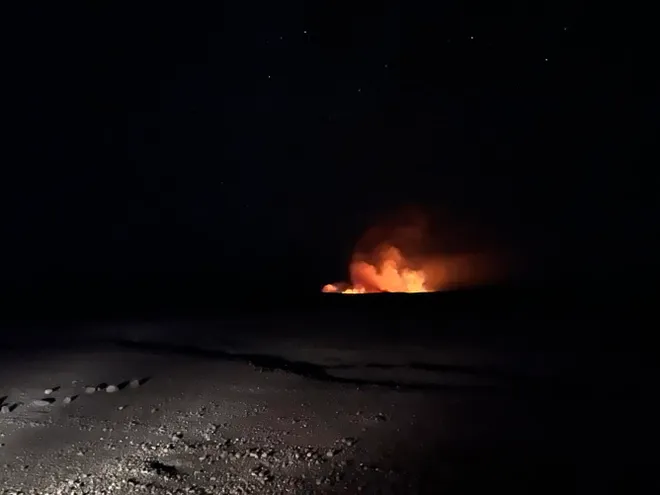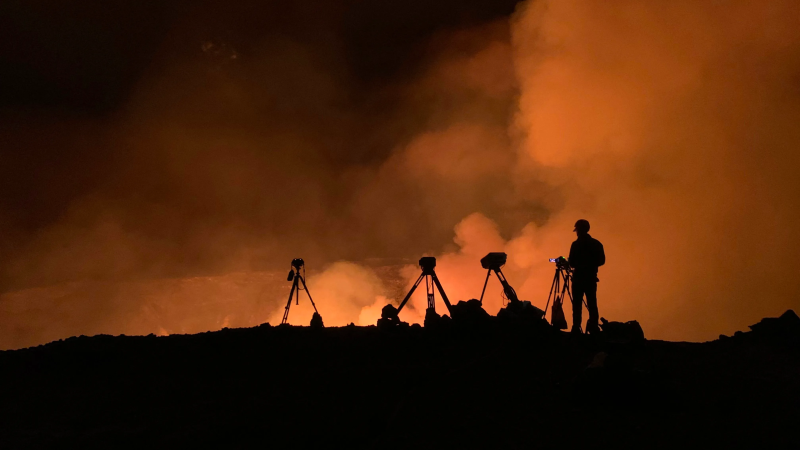Hawaii's Kilauea volcano erupts in remote summit region
The Kilauea volcano on Hawaii's Big Island erupted on Monday following hours of seismic activity below the volcano's summit, the U.S. Geological Survey said.
Kilauea, one of the world's most active volcanoes, began erupting at approximately 12:30 a.m. local time, about a mile south of Kilauea caldera within Hawaii Volcanoes National Park, a popular tourist destination that draws more than 1 million visitors per year. Webcam footage showed lava spewing from fissures in the summit, the USGS said.
Katie Mulliken, a geologist with the USGS Hawaiian Volcano Observatory, told USA TODAY the eruption poses no immediate danger to residents as it, so far, has been contained to a remote part of the summit, which is inaccessible by car or trails.
"There are really no threats to any communities," Mulliken said, adding that the USGS will continue to closely monitor the volcanic activity.
It was the first eruption in this region of the volcano in almost 50 years. The last one, in December 1974, lasted about six hours.

The USGS Hawaiian Volcano Observatory on Monday raised the volcano alert level for ground-based hazards to a warning, meaning a hazardous eruption "is imminent, underway, or suspected." Further, the USGS issued a red aviation color code, which indicates a "significant emission of volcanic ash" is likely, suspected or imminent, according to the U.S. Geological Survey.
The alerts came after hours of escalating activity beneath the surface of Kilauea. On Sunday, around 400 earthquakes were recorded below Kilauea's summit, with the largest temblor reaching a 4.1 magnitude, Mulliken said. Seismic activity is common before eruptions and is an indicator of lava movement inside the volcano, she added.

The primary hazard of Kilauea eruptions is a high level of volcanic gas because of its potential effects downwind, the USGS said. Other significant hazards includes instability, ground cracking and rockfalls that can be made worse by earthquakes near the summit.
More:After the Hawaii volcano eruption, Hawaii residents struggle to recover
Authorities with the National Forest Service closed an area surrounding the volcano, citing "seismic unrest." Officials also closed the parking lot for the Devastation Trail, which takes hikers through a winding path that offers vistas of land still recovering from the volcanoes 36-day eruption in 1959.
Kilauea erupted three times last year, bringing more than 10,000 tourists to Hawaii Volcanoes National Park to see the fountains of lava. In 2018, the volcano erupted for three months straight, destroying more than 700 structures, including 200 homes on Big Island, and displacing some 3,000 people – many of whom were unable to return home over a year after the eruption.
Disclaimer: The copyright of this article belongs to the original author. Reposting this article is solely for the purpose of information dissemination and does not constitute any investment advice. If there is any infringement, please contact us immediately. We will make corrections or deletions as necessary. Thank you.



